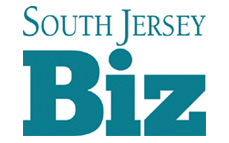
(Almost) Business as Usual

New Jersey’s meeting and event professionals look ahead to a promising post-pandemic landscape for their industry, while also keeping in mind the lessons they’ve learned and the benefits of offering hybrid events.
When the world came to a screeching halt last March and then quickly began replacing as many in-person interactions as possible with their virtual counterparts, the meetings and events industry had its own technological reckoning as it hurriedly found ways to bring members together while staying apart.
Associations, event planners and other meeting professionals were left in the lurch when their inherently face-to-face worlds of handshakes and hugs were suddenly reinterpreted as Zoom meetings and livestreaming.
“We were cancelling meetings left and right,” explains Trisha Rafferty, VP of marketing and communications for Meeting Professionals International’s (MPI’s) New Jersey chapter. “But while we were cancelling meetings, we were filling our time with online webinars and getting back to Meeting Planning 101 as virtual meetings quickly came into play. For somebody like me who was 25-plus years in the industry by that point, it was a definite learning curve; learning how facilitate virtual meetings, figuring out the best platform to use.”
But as New Jersey’s in-person restrictions loosen and people grow more comfortable venturing beyond the safety of isolation, the area’s event experts are eagerly—and cautiously—optimistic about the immediate future of their industry. And while they are heartened by a slow return to normal, they’re mindful of the lessons they’ve learned from nearly a year and a half of innovative solutions and on-the-fly learning.
“We had to reinvent ourselves,” says Christina Renna, president and CEO of the Chamber of Commerce Southern New Jersey. “But watching so many of our members reinvent themselves sparked creativity within our team. The businesses that have been really successful are the ones who were real innovators and didn’t get paralyzed by the pandemic; they just thought creatively about how can they make this work. Seeing so many of our members do that successfully has been a real inspiration. There are very few silver linings of the last year, but that’s at the top of the list.”
Everything from intimate networking dinners to days-long conferences attended by thousands are poised for a return, and many already have already started staging their comebacks.
Marlene Asselta, president of the Southern New Jersey Development Council (SNJDC), describes how the organization put together its annual golf outing in April 2020, where it held firm at a strictly capped attendance and took every safety precaution possible.
“It was very limited and structured in a way where no one was in touch with one another, they wore masks, they kept their distance,” she says. When it was time for the event’s 2021 incarnation, “we wound up with more golfers than we’ve ever had.”
Asselta continues, “What started as a 9 [a.m.] to 1 [p.m.] game went well beyond that,” signaling that many SNJDC members are more than ready for in-person events to come back.
Janet Garraty is the director of the Gloucester County Chamber of Commerce, a position she took over three weeks before the pandemic hit South Jersey. While she doesn’t see telemeetings ever really becoming a thing of the past, the chamber is “back to a full, pre-pandemic schedule.” It’s also forging ahead with COVID’s lessons at the forefront.
“I won’t say it’s post-pandemic because I don’t think we’re quite out of it yet,” she says. “The Gloucester chamber has always been a really friendly group, but each person has to respect the boundaries of the other people—and I think for the most part they are—because some people aren’t comfortable with a hug or a handshake or taking off their masks yet.”
Indeed, those who are attending in-person meetings and events aren’t necessarily clamoring for everything to be as it was before COVID.
“Things look a little bit different now,” Renna confirms. “You don’t see as many people shaking hands: You’re seeing the fist bumps, you’re seeing elbow bumps, you’re seeing just nothing at all. But you’re seeing a little bit less exchanging of business cards. I think everyone is just much more germ-conscious right now—and, candidly, I also think everyone’s gotten out of the practice of carrying their business cards around.”
The time that the meetings and events industry spent quickly mastering teleconference technology and how to deliver digital events isn’t going to waste. Whether they or family members are immunocompromised, are immobilized or simply can’t travel for any number of reasons, there is a prevailing certainty that the virtual components will become some kind of permanent offering, as determined by a combination of circumstances, attendees’ preferences and costs.
“We have learned that we can get things done by using technology and by finding other creative ways to work with one another,” Asselta says. “What I think will happen going forward—and maybe for a while—is we’ll be doing a combination of Zoom meetings when our committees meet and then when it’s speakers and programs of significant value, we’re going to continue to do them in person. And if we have to limit the number of guests will limit it.”
“Some sort of a virtual component is here to stay: I personally think that and I’ve seen that backed up at our events,” Rafferty agrees. “New Jersey is, for all intents and purposes, completely open but you’re still going to have people that aren’t getting on planes and going to events for all kinds of reasons. So to get your message across to your entire audience, there’s still going to need to be a virtual component. But when you add that on top of the live component, there’s an added expense, there’s an added planning component to it.”
Rafferty notes a recent MPI event—the World Education Congress, one of its annual cornerstone conferences—successfully merged its in-person and virtual components to such a degree that “it’s a great case study” for moving ahead with hybrid tracks.
“For people attending digitally, they had a whole talk show that gave you kind of a behind-the-scenes look at it,” she says. “Anybody that presented from the main stage, you could tune in later and see them answering questions in a one-on-one interview. It was very, very well put together and it recognized that their audience members not attending in person are still a vital part of the audience.”
While there is a strong desire for meetings and events to return to their pre-pandemic in-person incarnations, however, attendees are just as concerned with what event planners are doing to keep them and their fellow event-goers safe.
“You have to become an expert, or at least well-versed, in things like restrictions and infection rates. It’s constant monitoring at this point,” says Rafferty. “Before, we would research the weather and travel conditions. Now it’s a lot more research on things we never had to research before.”
“A couple people on our board work for the two big hospitals, so they’re like my go-tos a lot of times for expert guidance,” Garraty adds. “We don’t take anything for granted, most of all the safety of our members. Safety is the most important thing.”
No matter what the immediate future of the industry holds, Asselta, Garraty, Rafferty and Renna all agree that a smooth return is precipitated on one thing: respect for others and their boundaries.
“To me, the main thing is accommodating my audience,” Rafferty says. “It is so important to me to make sure that everybody is comfortable, from the huggers to the people who want to be there but left alone, and that the people that want to be online are getting the same education that they need. I don’t want anybody to feel like they have to put themselves in an uncomfortable position to network and learn.”

-(1).jpg?sfvrsn=e3d94e55_1)
1 comment
Leave a commentOrder by
Newest on top Oldest on topfrom Fri May 24 2024
Internet Marketing Trends in Burnaby: Burnaby's internet marketing landscape is constantly evolving,
Internet Marketing Trends in Burnaby: Burnaby's internet marketing landscape is constantly evolving, with agencies there adopting the latest trends and technologies. Whether it's leveraging AI for personalized marketing or utilizing video content to engage audiences, Burnaby's marketers are at the forefront of the digital revolution, driving significant results for their clients.Read full comment